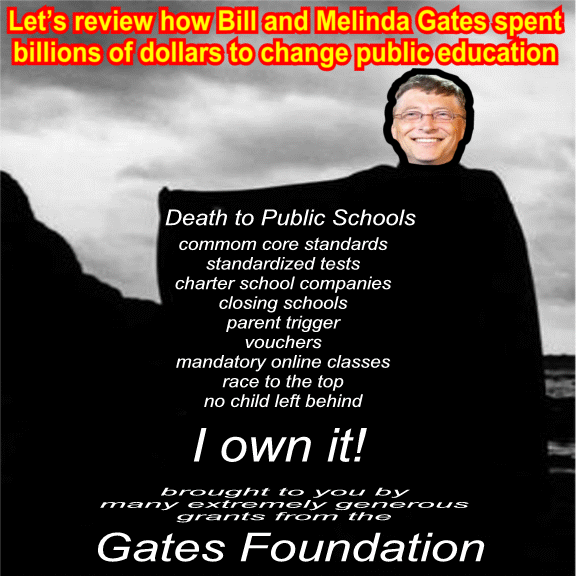The Bill & Melinda Gates Foundation has spent billions of dollars on numerous education projections — such as creating small high schools, writing and implementing the Common Core State Standards, evaluating teachers by standardized test scores — and the couple has had enormous influence on what happened in classrooms across the country.
Their philanthropy, especially in the school reform area, has been at the center of a national debate about whether it serves democracy when wealthy people can use their own money to drive public policy and fund their pet education projects. The foundation’s financial backing of some controversial priorities of the Obama administration’s Education Department put the couple at the center of this national conversation.
Critics have said that many of the foundation’s key education projects have harmed public schools because they were unworkable from the start and consumed resources that could have been better spent.
But you don’t have to go any further than the Gateses themselves to learn that some of the billions of dollars they put into public education reform efforts did not go as well as they liked.
In 2013, Bill Gates said, “It would be great if our education stuff worked. But that we won’t know for probably a decade.”
It didn’t take 10 years for them and their foundation to acknowledge that key education investments didn’t turn out as well as they hoped.
In the foundation’s 2020 annual letter, Melinda Gates said: “The fact that progress has been harder to achieve than we hoped is no reason to give up, though. Just the opposite.”
That same annual letter had a rather remarkable statement from Melinda Gates about the role of the wealthy in education policy, given her and husband’s role in it:
We certainly understand why many people are skeptical about the idea of billionaire philanthropists designing classroom innovations or setting education policy. Frankly, we are, too. Bill and I have always been clear that our role isn’t to generate ideas ourselves; it’s to support innovation driven by people who have spent their careers working in education: teachers, administrators, researchers, and community leaders.
The Gates Foundation began its first big effort in education reform about two decades ago with what it said was a $650 million investment to break large, failing high schools into smaller schools. CONTINUE READING: What the divorcing Bill and Melinda Gates did to public education - The Washington Post



